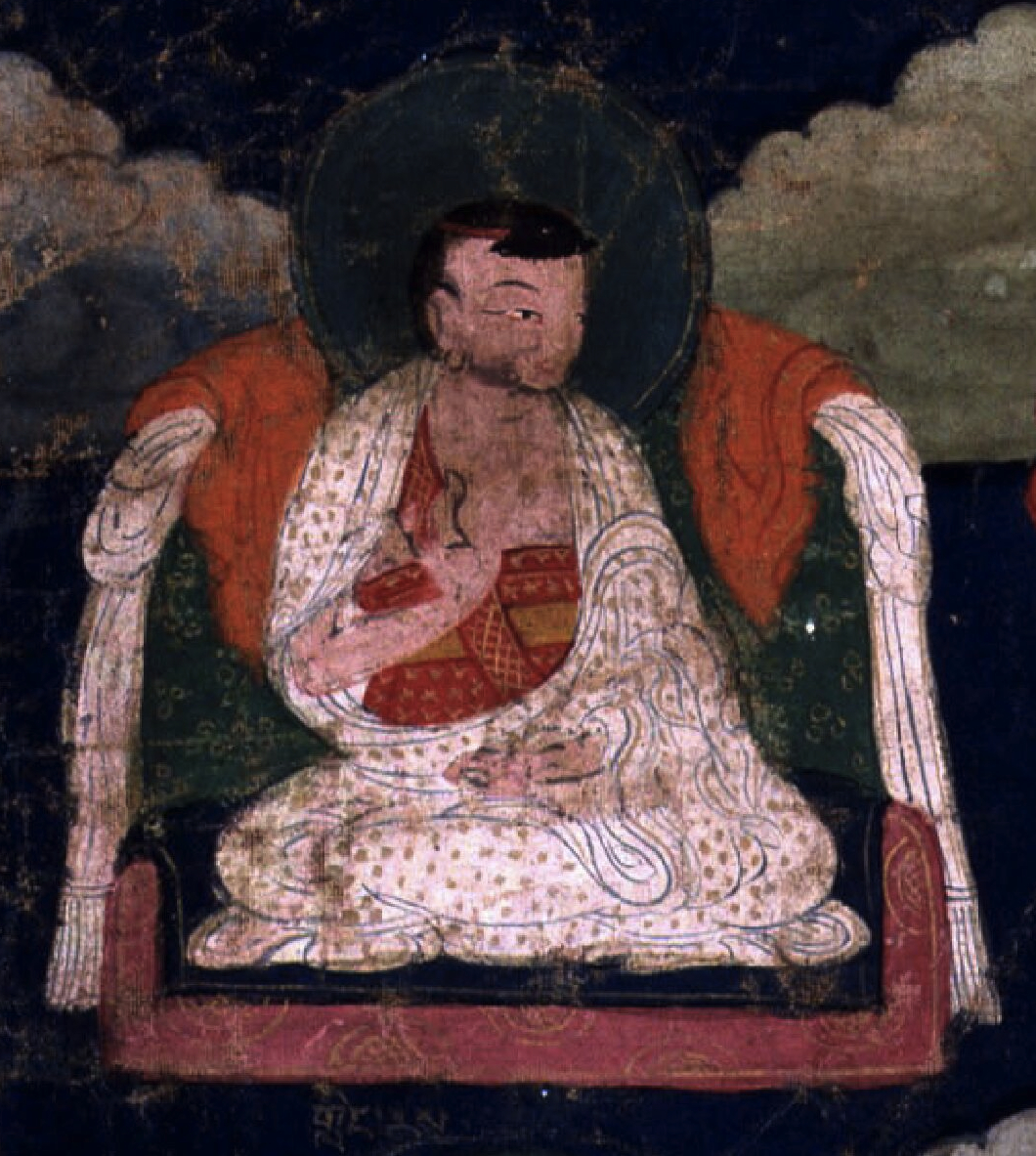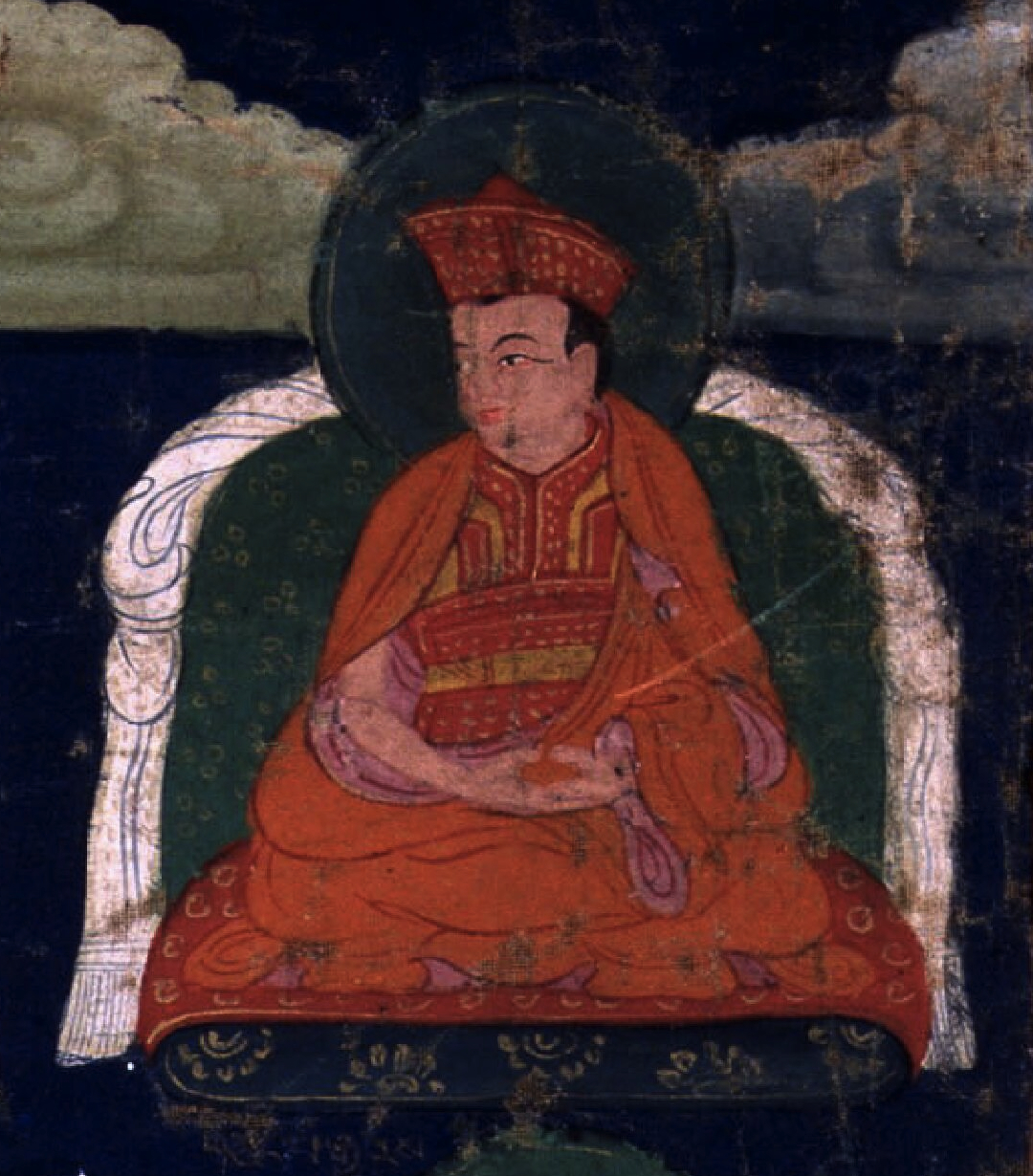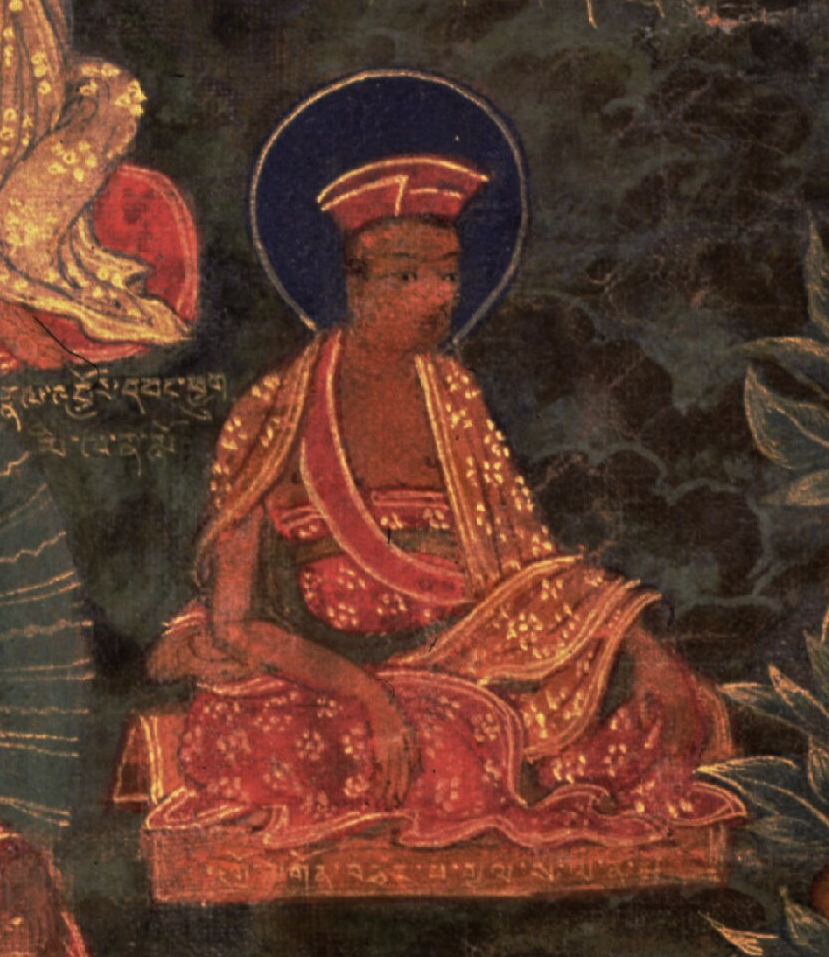Biography and autobiography in Tibet are important sources for both education and inspiration. Tibetans have kept such meticulous records of their teachers that thousands of names are known and discussed in a wide range of biographical material. All these names, all these lives—it can be a little overwhelming. The authors involved in the Treasury of Lives are currently mining the primary sources to provide English-language biographies of every known religious teacher from Tibet and the Himalaya, all of which are organized for easy searching and browsing. Every Tuesday on the Tricycle blog, we will highlight and reflect on important, interesting, eccentric, surprising and beautiful stories found within this rich literary tradition.
Part 1: Mila and Marpa
Part 2: Gampopa and Barompa
Part 3: First Karmapa and Lama Zhang
Part 4: Pakmodrupa and Gyergom Tsultrim Sengge
Part 5: Taklungtangpa and Sanggye On
Part 6: Marpa Sherab Yeshe and Jikten Gonpo
Part 7: Rinchen Gon and Jampa Pel
Kagyu Founders, Part 8: Lingrepa and Tsangpa Gyare
The Drukpa Kagyu is one of the most widespread of the traditions that stem from Marpa and Milarepa. It is the dominant Buddhist tradition in the Kingdom of Bhutan, to which it lends its name (Druk in the local tongue), and is also highly influential in Ladakh and far-western Tibet.

Tsangpa Gyare (1161–1211) is said to have initiated the tradition, but it was his teacher, Lingrepa Pema Dorje (1128–1188), who provides the link to Pakmodrupa (1110–1170), the disciples of whom initiated the eight “minor” branches of the Kagyu tradition. Some authors have proposed the existence of a “Lingre Kagyu” tradition, but this is historically inaccurate; not everyone who made a name for himself has a tradition named after him!
Lingrepa Pema Dorje was born in south-central Tibet, near Gyantse, to a doctor and astrologer. After briefly studying medicine, he took novice vows and trained in a Nyingma community. He did not succeed in maintaining his vows, however, and took up with a woman named Menmo, whose relatives supported the couple’s pursuit of religious study and practice in a community of Kagyu disciples.
At the age of 37, Lingrepa heard the name Pakmodrupa and went to him for teachings. According to tradition, after receiving instructions from Pakmodrupa, Lingrepa vowed to undertake a seven-year retreat. He kept that vow for only five days, returning to Pakmodrupa to report: “You said I should meditate on the primordial significance, so I meditated on it. Emptied of meditation and meditator, I was finished. I saw no reason to keep a meditation retreat.” Pakmodrupa responded by saying, “Your realization is sublime like that of the great Saraha beyond the Ganges.”

Menmo’s potentially disruptive presence as a female in a monastery ultimately lead Pakmodrupa to ask her to leave, and so she and Lingrepa left together to establish a small community called Nepu Gon, for which Lingrepa earned the epithet Nepupa. (“Lingrepa” comes from a combination of his family name, Ling, and his wearing of the white cotton robes, “repa,” of the followers of Milarepa.) But his refusal to embrace celibacy continued to dog him. It seems that once, in response to continued criticism, he strapped two book covers to his body, declared, “Am I not myself a volume of dharma?” and flew into the sky.
Among Lingrepa’s disciples was Tsangpa Gyare Yeshe Dorje. The youngest of seven children, he was given to a Bon lama for upbringing. He began training in Buddhist doctrine at the age of 12, taking novice ordination. He studied with a number of masters before meeting Lingrepa at a site the master had consecrated as Ralung. The meeting, unlike many master-disciple meetings, is not described with any miraculous flourish; it seems Tsangpa Gyare went on to study with many other teachers without considering Lingrepa to have been his root master.
Soon after, Tsangpa Gyare came down with what was likely the bubonic plague. His peers asked master Lingrepa to isolate him, and arrived at an understanding that the illness was caused by his not having paid proper homage to Lingrepa when they had met. Tsangpa Gyare decided to cultivate the proper veneration and redoubled his efforts at meditation, achieving a level of realization that Lingrepa himself praised, somewhat mildly, by saying, “Well, that’s what we call realization. It would be great if you could keep it up.”

Tsangpa Gyare was one of the few treasure revealers of the Kagyu tradition (almost all treasure revelation is planted firmly within the Nyingma tradition). While Lingrepa was still alive, he urged Tsangpa Gyare to meditate in the Kharchu Valley, which leads into what is today called Bhutan. According to tradition, Tsangpa Gyare went and there discovered a text authored by the Indian master Tipupa, who bestowed it to his disciple Rechungpa (1085–1161)—also a disciple of Milarepa. Rechungpa had concealed the text, and the secret of its place of concealment was passed on to Lingrepa, who told Tsangpa Gyare where to look for it. The text was the The Six Cycles of Equal Taste, a central work for the Drukpa Kagyu.
Tsangpa Gyare(pa) was, like his master, a “repa,” a cotton-clad yogin, until meeting Lama Zhang (1123–1193) soon before that man’s death, who advised him to become a monk. He thus took ordination and gained the name Yeshe Dorje. He had already, in 1180, transformed the site that Lingrepa had named Ralung into a monastic community; in the 1190s he established Longdol Monastery; and in 1205 founded Druk Monastery, from which the tradition that claims him as its founder takes its name. The Drukpa Kagyu has since split a number of times in fascinating ways, which we will examine in a later installment of Treasury of Lives.
Continue to Part 9, Yabzang and Yelpa
Thank you for subscribing to Tricycle! As a nonprofit, we depend on readers like you to keep Buddhist teachings and practices widely available.